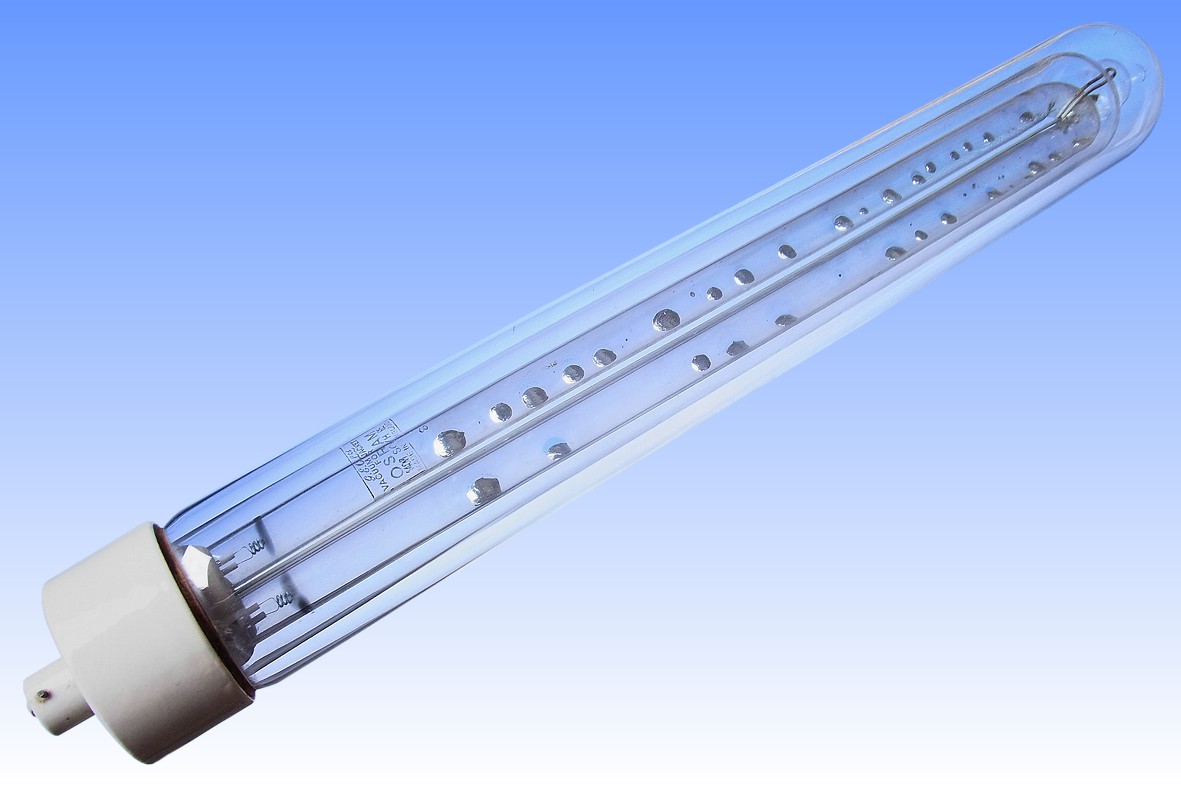
|
Osram SO/H Sodium Vapour with Dewar Jacket |

The discharge tube lining is manufactured from GEC X91 (formerly Na10) barium-aluminoborate glass, produced at the Osram Lemington Glassworks. This glass is characterised by a lower susceptibility to staining from sodium attack, but has a high rate of argon gas adsorption and a poor adhesion to liquid sodium. As a result, lamp life is determined by the duration before which the glass cleans up too much of the argon component of the neon-argon gas filling, which raises the striking voltage above what the ballast can supply. In addition, if the lamp is not kept absolutely level when alight, the sodium can run down to one end where it forms large light-blocking mirrors and leaves the other end devoid of sodium vapour which compromises lamp efficacy. The high stresses associated with X91 glass also often resulted in cracking during manufacture.
Despite these drawbacks, no effort has been spared in assembling the lamp to a level of very high quality. It also exhibits the later design of GEC electrode construction, in which a small magnesia ceramic tube is sealed into the glass around each wire leading to the electrodes. This prevents liquid sodium from coming into contact with the weak point at the glass-to-metal seal and reduces the risk of the seal failing in service. The etch of the dewar jacket has been placed on the inner glass vessel, protecting it from fading or being accidentally wiped off when the lamp is cleaned.




| Manufacturer: | The General Electric Company of England PLC | |
| Lamp Power: | 140 Watts | |
| Lamp Current: | 0.9 Amps | 0.81A Starting current |
| Lamp Voltage: | 165 Volts | 450V ignition |
| Cap Type: | By22d | Porcelain |
| Bulb Type: | Inner: TU-16 (TU-5") | Dewar: TA-65 (TA-20½") |
| Bulb Finish: | Inner: Borate Soft Glass | Dewar: Clear Soft Glass |
| Electrodes: | CCC-4 Beehive | Black W + BCT emitter |
| Arc Length: | ||
| Atmosphere: | Inner: Na | Ne99% Ar1% | Dewar: Vacuum |
| Luminous Flux: | 9,000 lm (average) | |
| Luminous Efficacy: | 64.3 lm/W (average) | |
| Colour Temperature & CRI: | CCT: 1700K | CRI: Ra -44 |
| Chromaticity Co-ordinates: | CCx: 0.574 | CCy: 0.425 |
| Rated Lifetime: | Not Published | |
| Warm-up & Re-strike time: | Approx. 15 minutes | Instantaneous |
| Burning Position: | Horizontal +20° -5° | |
| Overall Length: | 518 ± 10 mm | 20¾ inches |
| Light Centre Length: | 280 mm | 11 inches |
| Factory: | Hammersmith | England |
| Date of Manufacture: | January 1949 | Date Code 85 |
| Original / Present Value: | £4 15s 6d (1951) | £134.00 (2014) |
